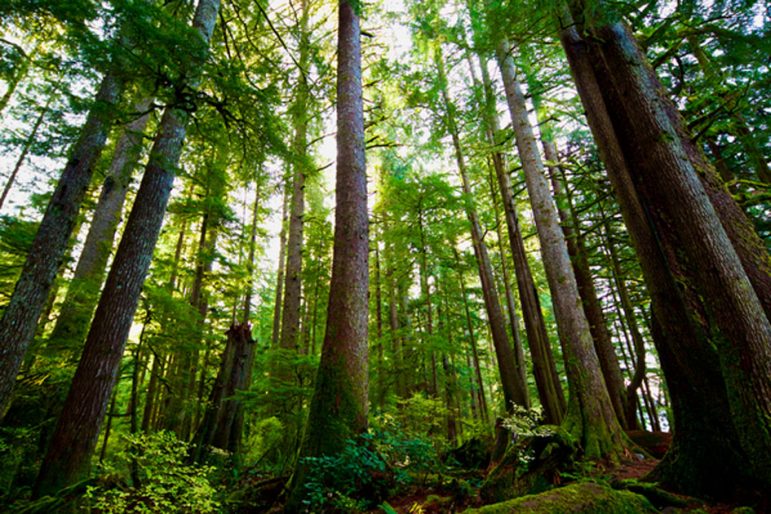Recognition of the benefits of living and building with wood—from aesthetics and performance, to cost and sustainability—is growing worldwide. With the emergence of new products such as mass timber and biomaterials, and emerging applications such as taller wood buildings and online shopping packaging, comes a renewed responsibility to ensure forests are sustainably managed in the face of changing climate conditions. In British Columbia, one of the world’s largest producers of wood products, this commitment is exemplified in the science, institutional infrastructure, and resources dedicated to reforestation.
Ensuring the ability for our ecosystems to adapt to rapidly changing climate conditions is critical—sequestered and stored carbon in sustainably managed forests and the products they produce have an important role to play in the fight against climate change. Scientists are unlocking other tools to improve forest resiliency and maximize carbon storage in B.C.’s forests.
Dr. Suzanne Simard is a professor of forest ecology at The University of British Columbia, leading a ground-breaking research project on the interconnectedness of trees and its role in forest health and adaptation. Known as “The Mother Tree Project,” Simard and her team have determined, through extensive field-based research, that trees are connected below ground through a vast network of fungal connections that they use to share resources and exchange chemical messages between one another.
“This research represents a big transformation in how we see forests—conventional forest management paradigms view trees as individuals that compete for survival of the fittest, and management practices have been shaped around that competition,” Simard shares. “What this research shows is that, while competition does happen, there is also a lot of collaboration that goes on. Harnessing the power of Mother Trees to nurture and protect new growth improves regeneration success and resilience of the entire forest ecosystem.”
These natural connections have been shown to have a particularly significant impact on forest health and regeneration where trees are stressed. This has important implications for assisted migration —the deliberate movement of tree species and seeds/seedlings to planting sites that will be most suited to them in predicted future climates. Early results from The Mother Tree Project indicate that Mother Trees can improve survival of migrated seedlings by 20 to 40 per cent.
B.C.’s Ministry of Forests, Lands, Natural Resource Operations and Rural Development has added this study, which will span 100 years, to its official experimental projects database, meaning this research will continue to inform reforestation practices.
“There is nothing more fundamental to the sustainability of B.C.’s forest sector than our reforestation program,” says Diane Nicholls, the Province of B.C.’s chief forester. “Our aim is to regenerate resilient forests that are variable and healthy, and that support all the values that society expects from its public forests.”
In recent years, the chief forester has implemented Climate Based Seed Transfer Guidelines, which introduce an ability to migrate seed and species from the parent tree point of origin based on detailed climate forecasting information. This system, based on assisted migration, is intended to allow forests to catch up with an adaptation lag and improve forest resiliency in the face of rapidly changing climate conditions. The future climate conditions are predicted out at 15 years for coastal forests and 20 years for interior forests, representing a conservative approach to seed transfer over a full rotation life cycle of a tree.

“Today, every tree planted in B.C. is supported by climate change science,” says Nicholls. “Deep research is informing our decisions on species and seed selection, fueled by ecologists and geneticists studying tree health and resilience in provenance trials across a land range that spans southern California through to Alaska.”
With a focus on science, innovation, and cross-sector collaboration, British Columbia is leading the world in adapting its forest regeneration practices to enhance forest resiliency and carbon capture capacity. The goal today remains the same as that of forest managers who began reforestation programs in the province almost 100 years ago—to ensure the health and longevity of B.C.’s forests for future generations.









